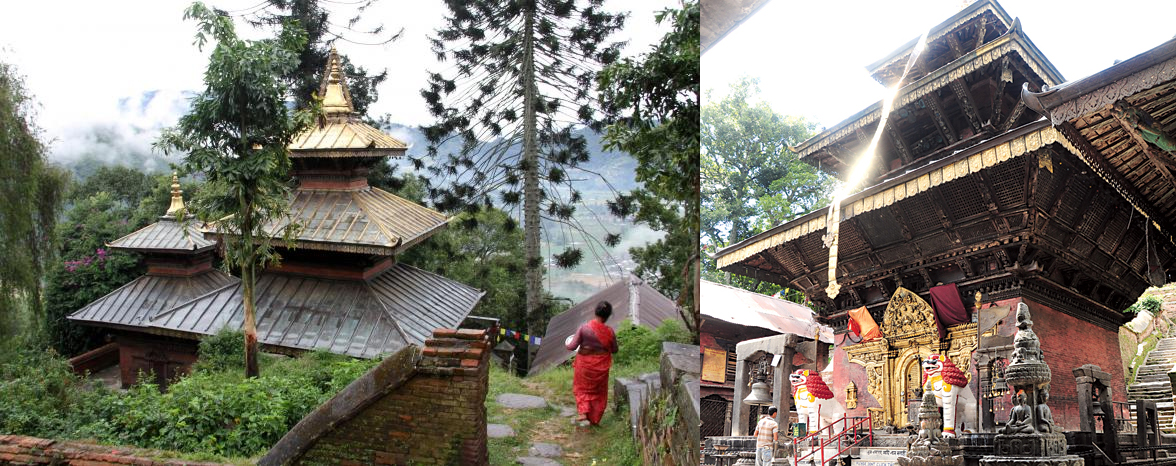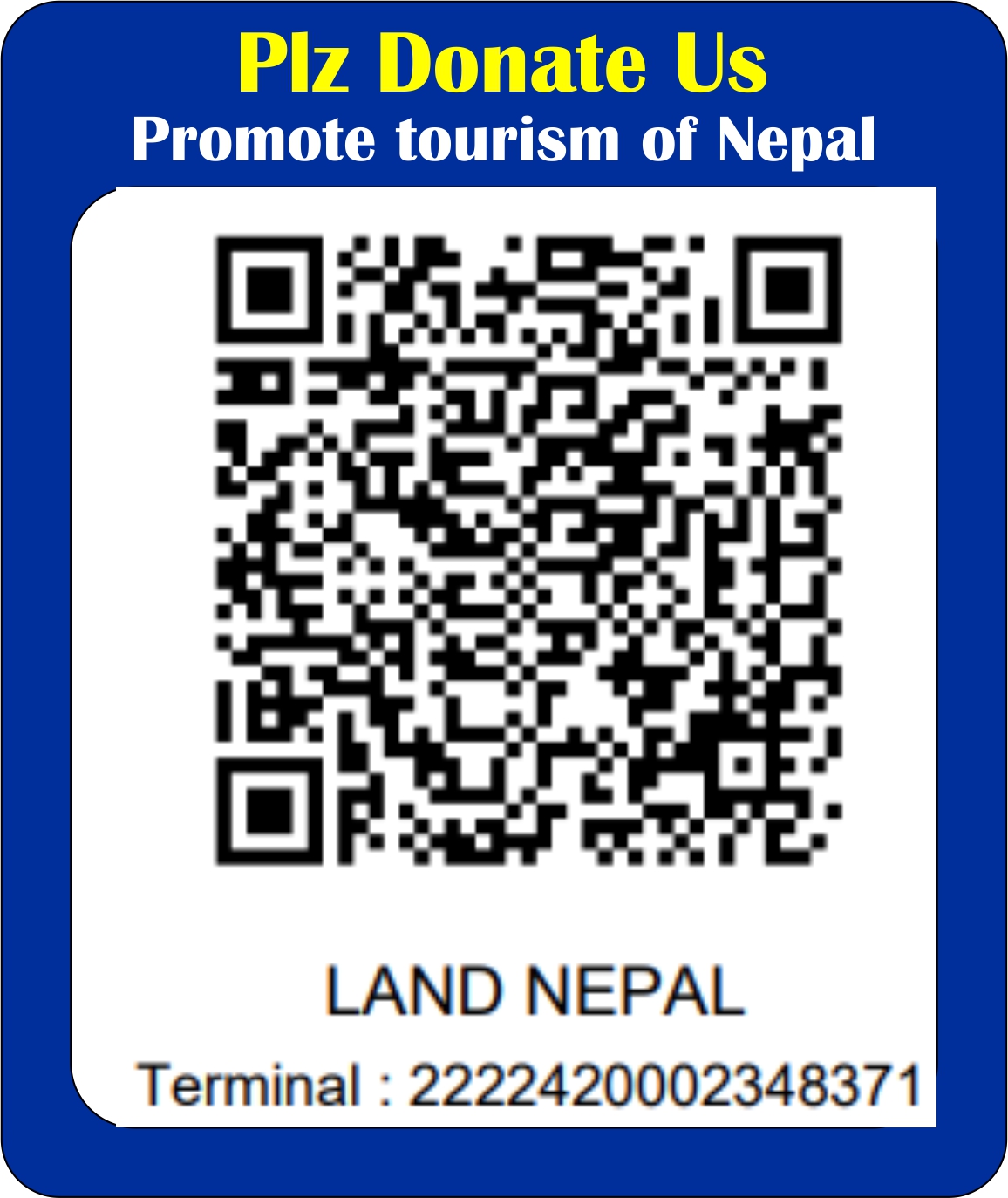The temple of Bajrayogini Devi, located on the northern hill from Sankhu Bazaar in Kathmandu, is one of the famous Shakti Peeths of Nepal. There is a temple of Bajrayogini in the middle of the dense forest north of the Shalinadi. Thousands of devotees visit this temple which is 20 km away from Kathmandu. There are many gods and goddesses in this temple complex. This temple is considered important from religious, archaeological, and historical point of view. The goddess is worshiped here according to Buddhist and Hindu traditions. Devotees from the valley and surrounding districts worship Bajrayogini as a Tantric goddess.
According to Nepal Mahatmya, the place where Yogini resides is called Yogakut and the river that originates from here is called Yogadhara. There has been a belief that visiting Bhagwati will fulfill one’s desires, eliminate sorrow and pain, complete the unfinished work, and bring happiness to one’s children. Built in the style of a pagoda, this Bajrayogini temple is about 500 years old and is mentioned in the Raja Pratap Malla inscription in the temple premises.
Myth
According to the mythology, two demons named Madhu and Katav tried to kill Brahmaji by throwing him from a lotus flower. Seeing this, Brahmaji praised Yoganindra Mahamaya i.e., Bhagwati Yogini for awakening Lord Vishnu. After Mahamaya woke up Vishnu, he destroyed Madhu and Katav. It is said that the name of this Bhagwat was regarded as Bajrayogini as it was praised by Brahma, Vishnu, and Maheshwar. Similarly, it is said that it was Bajrayogini who forced Manjushree to cross the Kathmandu Valley.
Architecture of Bajrayogini Temple
The present pagoda-style gilded temple of Bajrayogini is believed to be of Mallakalin. The temple has bronze roofs on all three floors. Metal flags of various shapes are seen fluttering along the roof. The temple is adorned with a huge gold-plated pinnacle. The two metal flags on the roof are no less attractive.
Idol of Bajrayogini Goddess
The idol of Bajrayogini goddess is made with a red face and three eyes. The goddess is holding a sword and a nirupada in the ritual posture on the thumb and middle finger of the right and left hand in the Vajrayana device. There are statues of lioness on the right and tigress on the left of Bajrayogini idol. The fire burning in the shrine of Bajrayogini Mata is considered as the fire of the true age. There is a popular belief that children will not be seen by anyone and will not be possessed by demons if they wear this vibhuti made of unbroken fire.
Premises around Bajrayogini Temple
In the sanctum sanctorum of the temple, there are idols of Bajrayogini, Ugratara and Singhbahini Bhagwati. Bajracharya Gubhaju is worshiped in the temple every day by Tantric method. The main entrance of the temple facing south can be seen with gold water. There are idols of various deities on both sides of the door.
There is a stone statue of Vishal Singh in front of the gate. The huge bell on the right side of the temple and the sun-crescent flag on the left side make the temple beautiful. In the bell on the left, it is mentioned that Maharani Maya Hiranyagarbha ordered it in BS 1920. The large pillar in front of the temple resembles a metal lion praying to the goddess. Excellent specimens of woodwork can be seen on the windows, statues, etc. on the walls of the temple. But some of the most valuable wood art seems to be disappearing
To the east of the temple is a huge temple of Gautama Buddha, the founder of Buddhism. That is why the temple of Bajrayogini is considered a unique example of religious tolerance. Other small and large Buddhist temples around Bajrayogini confirm this. There are three historic stone fountains in the northern part of the temple. On the northwest side of the temple are small caves of huge stones. Pati and Sattal in the south and west are used for chanting in the morning and evening.
Cave in Bajrayogini Temple
There are 9 stone age carpet caves in this temple complex. One of these caves is also called the Cave of Sin. It is customary for the priests of Bajrayogini to stay in this cave for 12 days and meditate for 9 days. There is a legend that one who enters this cave is regarded as a righteous person and one who can’t enter is regarded as a sinner. There are also nine streams.
Bajrayogini Procession
Every year from Chaitra Shukla Purnima to Ashtami there is a special worship of Goddess, and a procession takes place. The procession started after the priests offered price and betel nut to the Swayambhu Chaitya of the temple and the original Bajrayogini Devi in Chaite Dashain. It is also considered to be the main destination of the autumn Navratri. It is considered as one of the major processions celebrated in the valley. Visitors from Kathmandu, Bhaktapur and Lalitpur flock to the fair for eight days.
In this fair, which takes place after every Chaite Dashain, the idol of Bajrayogini (ancient Swayambhu Chaitya), lion-faced and tiger-faced idol is brought to Sankhu settlement along with the idol of Bajrayogini. From the temple of Bajrayogini at a high place, the sight of chariots rolling downhill looks exciting. It is believed that the residents of Shankhu town are not allowed to wear leather shoes, umbrellas, demolish houses, build new ones, collect loans, ride elephants and horses during the 8-days long procession period.
-By: Kusum Kharel for Land Nepal




